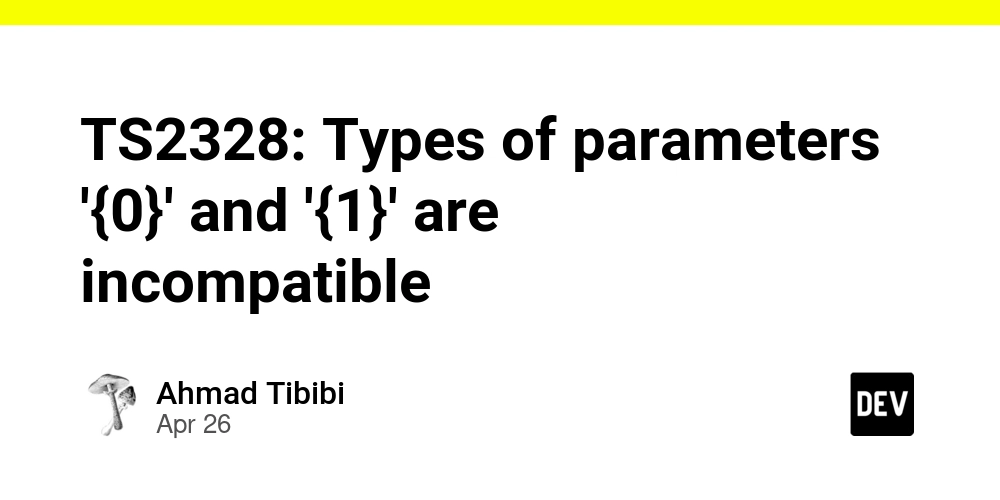XDR In Penetration Testing: Leveraging Advanced Detection To Find Vulnerabilities
Extended Detection and Response (XDR) has emerged as a transformative security technology that unifies visibility across multiple security layers. When applied to penetration testing methodologies, XDR offers unprecedented capabilities for identifying vulnerabilities that might otherwise remain hidden. This article explores how security professionals can leverage XDR capabilities during penetration testing to enhance vulnerability discovery, validate […] The post XDR In Penetration Testing: Leveraging Advanced Detection To Find Vulnerabilities appeared first on Cyber Security News.

Extended Detection and Response (XDR) has emerged as a transformative security technology that unifies visibility across multiple security layers.
When applied to penetration testing methodologies, XDR offers unprecedented capabilities for identifying vulnerabilities that might otherwise remain hidden.
This article explores how security professionals can leverage XDR capabilities during penetration testing to enhance vulnerability discovery, validate security controls, and strengthen overall security posture.
Understanding XDR Technology In Security Frameworks
Extended Detection and Response represents a significant evolution in security technology, designed to overcome the limitations of siloed security tools.
XDR collects threat data from previously separated security components across an organization’s entire technology stack, including endpoints, networks, cloud workloads, and email systems.
This comprehensive approach enables security teams to rapidly detect and eliminate threats across multiple domains through a unified solution.
At its core, XDR operates through a three-step process. First, it ingests and normalizes large volumes of data from diverse security sources.
Second, it parses and correlates this data to automatically detect stealthy threats using advanced artificial intelligence and machine learning algorithms.
Finally, it prioritizes threats by severity and facilitates rapid analysis, investigation, and response. Two primary types of XDR solutions exist in today’s market.
Hybrid or open XDR platforms integrate with detection tools from multiple vendors and centralize the telemetry these technologies collect.
Native XDR platforms, in contrast, typically operate as standalone solutions without integrating third-party tools.
For penetration testing purposes, open XDR solutions often provide greater flexibility and comprehensive visibility due to their ability to aggregate data from heterogeneous environments.
Integrating XDR Into Penetration Testing Methodology
Traditional penetration testing approaches often focus on individual system components, potentially missing vulnerabilities that span multiple attack vectors.
Incorporating XDR into penetration testing methodologies addresses this limitation by providing unified visibility and advanced correlation capabilities.
When performing penetration tests in environments with XDR implementations, security professionals gain insights not only into existing vulnerabilities but also into how effectively security tools detect and respond to exploitation attempts.
Comprehensive Visibility For Attack Simulation
- XDR enables penetration testers to monitor how simulated attacks spread across interconnected security domains, providing visibility beyond isolated systems
- Traditional penetration testing often examines endpoints or networks separately, while XDR tracks multi-stage attack sequences across hybrid environments
- Testers can validate detection effectiveness across the entire cyber kill chain, from initial breach attempts to data exfiltration activities
- Example: Simulating lateral movement after endpoint compromise reveals whether XDR detects suspicious cross-system interactions in real time
- This approach identifies gaps in security tool integration and policy enforcement across cloud, network, and endpoint layers
This comprehensive visibility helps organizations understand not just whether a vulnerability exists but also whether their existing security controls would detect real-world exploitation.
Many XDR solutions allow pentesting teams to identify gaps in detection by highlighting behaviors that are detected but not blocked by prevention controls.
This capability is invaluable for refining security policies and improving overall defense mechanisms, particularly in hybrid environments where legacy systems coexist with modern cloud infrastructure.
Alert Validation And Log Analysis
A critical technique when using XDR during penetration testing is alert validation.
By simulating real-world threats and analyzing the security alerts generated by the XDR platform, testers can validate whether the correct alerts are triggered, identify missing or redundant rulesets, and measure the time between security events and alert generation.
For instance, if a tester exploits a misconfigured API endpoint, the XDR system should generate alerts related to unauthorized access attempts or anomalous API activity.
Log analysis becomes equally important in XDR-enhanced penetration testing. By examining logs captured during simulated attacks, security teams can determine whether they are collecting the right logs at the appropriate verbosity level.
This process helps prioritize new data sources required to address logging gaps and ensures logs contain sufficient granularity for effective threat detection.
For example, XDR might reveal that network traffic logs lack details about DNS query patterns, limiting the ability to detect domain generation algorithm (DGA) activity used by advanced malware.
Advanced Techniques For Vulnerability Discovery with XDR
Leveraging XDR during penetration testing enables advanced techniques that uncover vulnerabilities traditional approaches might miss.
By correlating events across multiple security domains, penetration testers can identify subtle weaknesses in security architectures and validate detection capabilities.
For example, XDR’s ability to map telemetry from endpoints, firewalls, and cloud platforms might reveal that a vulnerability in a legacy application allows attackers to bypass network segmentation controls, a scenario that individual security tools might fail to contextualize.
Behavioral Analysis And Threat Hunting
XDR’s behavioral analysis capabilities enable penetration testers to emulate advanced persistent threat (APT) tactics.
By combining techniques such as credential dumping, privilege escalation, and lateral movement, testers can assess whether XDR detects these behaviors as part of a unified attack chain.
For instance, XDR should correlate a sudden spike in failed login attempts on an endpoint with unusual outbound traffic from a server, flagging it as a potential brute-force attack followed by data exfiltration.
Threat hunting with XDR allows testers to proactively search for indicators of compromise (IOCs) and tactics, techniques, and procedures (TTPs) associated with known threat actors.
By using frameworks like MITRE ATT&CK, testers can simulate attacks such as supply chain compromises or living-off-the-land (LOL) binaries and verify if XDR detects these activities.
This approach is particularly effective for identifying vulnerabilities in security monitoring workflows, such as delayed alerting for low-and-slow attacks.
Testing Detection Efficacy Against Real-World Malware
Rather than relying solely on simulated threats, penetration testers can use real malware samples in controlled environments to test XDR detection capabilities.
For example, deploying ransomware variants like LockBit or BlackCat in an isolated lab environment while monitoring XDR alerts provides insights into how well the system detects file encryption patterns, command-and-control (C2) communications, and lateral movement techniques.
This method validates whether the organization’s XDR implementation can keep pace with evolving adversary tradecraft.
Strengthening Security Posture Through XDR-Driven Insights
The integration of XDR into penetration testing delivers actionable insights that go beyond traditional vulnerability reports.
By mapping detected threats to frameworks like the NIST Cybersecurity Framework or CIS Controls, organizations can prioritize remediation efforts based on real-world exploitability and detection gaps.
For example, if XDR reveals that a critical vulnerability in a web application is not being monitored by existing web application firewalls (WAFs), the organization can update its logging policies or deploy additional sensors.
Furthermore, XDR enables continuous validation of security controls.
Post-remediation, penetration testers can rerun attack simulations to verify that patches or configuration changes have effectively mitigated vulnerabilities and that XDR now detects previously unflagged activities.
This iterative process ensures that security improvements translate into measurable reductions in risk.
In conclusion, XDR transforms penetration testing from a point-in-time assessment into a dynamic process for uncovering hidden vulnerabilities and validating defense mechanisms.
By leveraging its cross-domain visibility, advanced analytics, and real-time detection capabilities, organizations can build resilient security architectures capable of anticipating and neutralizing modern cyber threats.
Find this News Interesting! Follow us on Google News, LinkedIn, & X to Get Instant Updates!
The post XDR In Penetration Testing: Leveraging Advanced Detection To Find Vulnerabilities appeared first on Cyber Security News.



























































































































































![[The AI Show Episode 143]: ChatGPT Revenue Surge, New AGI Timelines, Amazon’s AI Agent, Claude for Education, Model Context Protocol & LLMs Pass the Turing Test](https://www.marketingaiinstitute.com/hubfs/ep%20143%20cover.png)































































































































![[FREE EBOOKS] AI and Business Rule Engines for Excel Power Users, Machine Learning Hero & Four More Best Selling Titles](https://www.javacodegeeks.com/wp-content/uploads/2012/12/jcg-logo.jpg)











































































































































































































































![Hostinger Horizons lets you effortlessly turn ideas into web apps without coding [10% off]](https://i0.wp.com/9to5mac.com/wp-content/uploads/sites/6/2025/04/IMG_1551.png?resize=1200%2C628&quality=82&strip=all&ssl=1)



![This new Google TV streaming dongle looks just like a Chromecast [Gallery]](https://i0.wp.com/9to5google.com/wp-content/uploads/sites/4/2025/04/thomson-cast-150-google-tv-1.jpg?resize=1200%2C628&quality=82&strip=all&ssl=1)












![Apple Drops New Immersive Adventure Episode for Vision Pro: 'Hill Climb' [Video]](https://www.iclarified.com/images/news/97133/97133/97133-640.jpg)

![Most iPhones Sold in the U.S. Will Be Made in India by 2026 [Report]](https://www.iclarified.com/images/news/97130/97130/97130-640.jpg)
![Apple to Shift Robotics Unit From AI Division to Hardware Engineering [Report]](https://www.iclarified.com/images/news/97128/97128/97128-640.jpg)

































































































































